Murv Seymour:
Christine Wenc, welcome to “In Focus.”
Christine Wenc:
Thank you, thank you for having me.
Murv Seymour:
I’m excited to have you, I mean, my goodness, one of the founders of the iconic “Onion.”
Christine Wenc:
I’m not a founder.
Murv Seymour:
No? No?
Christine Wenc:
I’m not a founder of “The Onion.” I worked there.
Murv Seymour:
How do you describe it?
Christine Wenc:
Well, my roommate founded “The Onion,” actually, Tim Keck, who I knew from my freshman year in the dorms at UW-Madison, and his friend Chris Johnson were the ones who founded “The Onion.”
Murv Seymour:
Gotcha.
Christine Wenc:
But Tim asked a bunch of his friends to be a part of it. And he knew that I was a writer and was interested in journalism and all that stuff. So he actually originally hired me to be the art director. I was, like, I was 19 years old and I didn’t know what that was.
Murv Seymour:
Yeah.
Christine Wenc:
But I actually became the copy editor. But I did, yes, but anyway-
Murv Seymour:
Well, you–
Christine Wenc:
But yeah, but that’s where I-
Murv Seymour:
But you were involved with it in terms on the ground level.
Christine Wenc:
Yeah, yeah, absolutely, I was there on day one through into the next couple of years, but I didn’t have anything to do with “The Onion” becoming famous. But I did want to write about “The Onion” becoming famous.
Murv Seymour:
How in the world did the idea start? Or something like that?
Christine Wenc:
Well, Tim had done a little this sort of other publishing venue with a friend of his, a cartoonist named James Sturm. I actually just bought one of Sturm’s books here about 10 minutes ago.
Murv Seymour:
Oh, and I should say, we’re in Arcadia Books here in Spring Green.
Christine Wenc:
Yeah, Arcadia Books.
Murv Seymour:
This is, you’re from Spring Green.
Christine Wenc:
I grew up in Spring Green, yeah.
Murv Seymour:
Yeah.
Christine Wenc:
I went to high school here. I lived here from age 4 through 17, so I went K through 12, right here in town.
Murv Seymour:
And how does it feel to be back home?
Christine Wenc:
It’s nice, yeah. I was walking around a few minutes ago and was like, “Wait, “I haven’t been here in a couple of years, I don’t think, even though I live in Madison now.” And it was nice ’cause like, oh, right. ‘Cause everything is so-I have many, many years of memories all over the place. So it’s fun to kind of walk through that.
Murv Seymour:
And do you feel like your Spring Green, your days on the mean streets of Spring Green, taught you anything about funny and taught you anything about humor and that sort of thing?
Christine Wenc:
I think that, yeah, that’s an interesting question. My time in Spring Green was, wasn’t really about comedy. It was about being, I was, like one of the, like, punk rock, new wave kids. Like, one of, like, five of them in the entire, like, you know, tri-county area or whatever. And what I did learn about, I think, was, like, looking at society from kind of the outside and in a kind of a different way. Like, through the art lens of kind of art and, you know, music and that kind of stuff. So when I went to Madison, you know, then I sort of found my people and, you know, went on from there.
Murv Seymour:
So you end up getting involved with “The Onion” and you kind of knew nothing about stand-up comedy or humor and that sort of stuff?
Christine Wenc:
No, no, I mean, well, I mean, I grew up, you know, like, my dad had a subscription to “National Lampoon,” which he would, like, hide, you know, and I would find it and bring it out again. I used to – I actually grew up in, out in the country about eight miles outside of town, most of the time, and I had a very long bus ride, and I used to read, like, Woody Allen books on the bus and, like, laugh my head off for, like, the 45-minute bus ride and things like that. So, you know, my dad had a good sense of humor. He was sort of a practical joker a little bit. So there was, like, some of that stuff happening in the house all the time. And my parents definitely encouraged, you know, looking at things, you know, through the lens of humor when there were difficulties, I think so, yeah.
Murv Seymour:
And what do you remember about your roommate in terms of how he came up with this whole idea?
Christine Wenc:
Well, Tim had, like I said, Tim had been working on this calendar thing that he was doing with Sturm. Sturm drew the pictures, and Tim sold ads to attach to it. And basically, he needed to, like, make some money, you know. He was like, running out of money, and he didn’t want to get a regular job, so he– And the thing about Tim that’s really important for the story, and this is, I outlined this at the beginning of the book. He actually came from a newspaper family, like a major kind of Chicago-area newspaper family. His dad was an editor at the “Hammond Times” of Hammond, Indiana, and his mom was one of the first environmental investigative reporters there. So he grew up in a super saturated newspaper environment. And so when he needed to make some money, at the time, they were like a billion free newspapers all over Madison. It was like that was, it was like sort of the social media, in a weird way, of the time. And so it was very natural to Tim to be like, “Well, maybe I’ll start a newspaper,” right? But the thing is, he didn’t know what to put in the newspaper. He just wanted to make the newspaper. So it started out, unlike many publications, it started out, like, he just needed to make some money. And then it was like, “We got to put something in it.” And then a friend of mine, I introduced my friend Matt Cook to Tim, and Matt was an improv comedian at a place called The Ark Improv in town, and Matt was a good friend of mine also. And so Matt was like, “Why don’t we just make it all up?” And Tim was like, “That’s a great idea.” So that’s what we did.
Murv Seymour:
Wow.
Christine Wenc:
So yeah, that was the genesis of it.
Murv Seymour:
What could go wrong just making it up?
Christine Wenc:
Yeah, we’ll just make it up. Yeah, I mean, you know, there’s no, like, it’s funny ’cause sometimes people think there’s some, you know, very like, like high level, you know, concept. But I think it came, it came up very spontaneously in response to a lot of stuff. And everybody was, like, 20. So I mean, we were just, like, babies working on this.
Murv Seymour:
And there’s probably a generation out here now that aren’t familiar with “The Onion,” maybe? How would you describe “The Onion” newspaper?
Christine Wenc:
Well, it was a newspaper, for one thing. Remember newspapers? It’s like, you know, made of paper, and it’s on newsprint. [laughs] It’s news on paper. No, it was a weekly and it was, we had, there was a very intense grind to, like, produce that thing every week. And a lot of it was written at, you know, 3 o’clock in the morning, you know, before they had to go to the printer at, you know, 5 o’clock in the morning kind of thing. So there was a lot of kind of spontaneousness in there and lots of freedom, and the first, it was almost a zine in a way at first, because it was very free-form. But the thing from day one, though, it was always, it was always meant to be funny, but it never pointed to itself as comedy, right? So people would pick it up and be like, “What is this?” You know, like, “What are these very strange stories?” And people would try to kind of fit it into their existing paradigm and get like, “Oh, it doesn’t, it doesn’t fit,” you know. And so that was fascinating to people. And every issue was different. And so people started picking it up and it became successful, like, almost right off the bat. So Tim was able to pay his rent, like, very quickly after that.
Murv Seymour:
So now, is there anything symbolic in the name in terms of, you know, onions and onions make people cry and crying is what people do when they laugh hard enough and all that kind of stuff? Is there anything to the name from that standpoint?
Christine Wenc:
Nope, nope, I mean, Tim swears up and down, and I have asked him several times, like, “Is this really the story, Tim?” And he’s like, “Yes, it’s really the story.” So the story is that nobody had any money. Like everyone’s living on, like, peanut butter and jelly. But apparently he and his partner Chris Johnson ate a lot of onion sandwiches. And one day, Chris’s uncle was there, and he’s like, they were trying to come up with a name for the paper. They were like, “Maybe we’ll call it ‘The Paper’ and maybe we’ll call it ‘The Rag.'” And his uncle was like, “Why don’t you call it ‘The Onion?'” And they were like, “Sold,” right? Like, that was it. You know, I’ve looked online sometimes and there’s, people are like, “Oh, it’s ‘The Onion’ is a name for like a multi-layered news–” And I’m like, “No, no, no.” I don’t know where that stuff is coming from. Like, it’s, there’s no– it doesn’t mean, like, layers of meaning or anything. It’s like, it’s basically a spontaneous thing. Like, many things happened that first year.
Murv Seymour:
So 1988, first headline goes up. I forget the headline. I thought it was something, Mendota…
Christine Wenc:
Mendota, “Mendota Monster Mauls Madison?”
Murv Seymour:
Yeah, yeah. So, how long did it take before things caught on and this was like, the paper to kind of get your hands on?
Christine Wenc:
I don’t know exactly, but it was pretty fast. I mean, people, even now, people come up to me and remember, like, issues from that first year. I think that the paper, the thing I remember about “The Onion,” and I talk about the business side of “The Onion” actually a lot in the book. They, you know, they needed it to, like, support itself, and they needed it to, you know, give them, like, a little bit of extra money to, like, make their rent and stuff, so. I mean, my memory is that it became, you know, it was the students were mostly reading it, but it became successful, like, pretty quickly. I mean, Tim describes it as being, like, almost immediately, it was successful, right? And then they were like, “Uh-oh, now we have to keep doing it,” right?
Murv Seymour:
Yeah.
Christine Wenc:
So it was successful right away, which I, which was interesting.
Murv Seymour:
Yeah, and I’m going to grab my little prop here because you mentioned the word “book.” And, you know, as people listen and watch this, one of the reasons we’re talking to you, because you spent six years on writing this.
Christine Wenc:
Yeah.
Murv Seymour:
“Funny Because It’s True.” And what, first of all, even made you want to dive in to tell the story of “The Onion?” What made you, what caught your attention?
Christine Wenc:
I first thought of this when, so I moved. I lived for about 20 years on the East Coast. I was in New York and Boston for a long time. And I moved back here in about 2017. And, you know, you think about, you know, “Oh, I went to college here.” And like, naturally, I started thinking about “The Onion.” It was during the first Trump administration. And on a particularly interesting news day, I was, you know, listening to NPR and going, “Wow, I wonder what ‘The Onion’ people think of all this?” ‘Cause I hadn’t thought about “The Onion” really. I hadn’t paid much attention to “The Onion” myself for a long time. And I also, and then when I started googling around, I also discovered that there was actually a lot of information online about “The Onion” that was– “The Onion’s” history that was actually pretty inaccurate. And, you know, I had done graduate work in history, and I’d been a journalist in the past, so I was like, “Wait a minute, like, I can’t, you know, “we can’t all die and have no one, you know, know, like, the actual story of ‘The Onion,'” right? So, and I know that, you know, the history is written by the people who, you know, were able to write it down. And what’s, you know, the historical record is not necessarily accurate sometimes. It’s one of the things you learn when you study history. So it was partly, you know, trying to make sense of what was happening at the time. You know, remember, there was all this talk about fake news and all this kind of stuff. So those combination of two things, like, made me want to write the book, so.
Murv Seymour:
Yeah, and after I spent the last week or so, you know, doing my best to get through this book, and I got through it probably about two hours before we sit here and talk.
Christine Wenc:
Yeah.
Murv Seymour:
But it seems to me that it’s a great kind of account or evolution of, you know, where “The Onion” started, how it started, and kind of what it evolved into. What was your thought process in terms of how you put it together and what you were trying to tell?
Christine Wenc:
Yeah, so I realized early on that the history of “The Onion” is also the history of media since the ’80s, the history of news and the media. In order to satirize something well, you have to really understand it. And I realized that, oh, I’m going to need to learn more about the history of what they were satirizing, the history of what they were doing a parody of, because, you know, everything is in a context. And I didn’t want to tell the story, like, in isolation of the world “The Onion” was existing in. And so I, it was really important to me to also have it be, it’s kind of like a stealth media history as well. And I talked to media scholars and that sort of thing to kind of flesh it out and make sure I was, like, on the right track and that kind of thing. So I’m hoping that people will sort of by osmosis also, you know, understand that there’s a reason why we have the media that we have now. And, you know, this story, in a weird way, will kind of help you understand that.
Murv Seymour:
Yeah, you also talked about some of the local weekly papers in the Madison area.
Christine Wenc:
Yeah, yeah.
Murv Seymour:
How do you think that influenced the work that “The Onion” did?
Christine Wenc:
Well, there’s a, they first– “The Onion” was not produced, it was a– People think of it as a campus newspaper, but it was independent of campus. However, its primary competitors were the local campus newspapers, which were “The Daily Cardinal,” which was, like, the left-wing paper, and then “The Badger Herald,” which at the time was, like, the right-wing paper. And, Tim, you know, in one of my interviews with Tim Keck, he explains that, you know, the “Cardinal” was, there were things about the way that they presented their politics that were, you know, it was, it wasn’t always appealing to folks, even if they, like, agreed with them, right? And then on the right wing, this was sort of the beginning of, like, the Young Republicans. There was a lot of really just disgusting and abhorrent and like, awful stuff that was being published in the right-wing student newspaper. And so, as Tim describes it, he’s like, “Everybody, you know, people didn’t really like either one, right?” So “The Onion,” you know, sort of went into the middle of that. And it kind of, it was like an alternative to the college papers.
Murv Seymour:
I thought it was interesting reading, you talked about it was important for “The Onion” to look like a real newspaper.
Christine Wenc:
Yeah.
Murv Seymour:
Like they looked at “USA Today.”
Christine Wenc:
Yeah, yeah, yeah.
Murv Seymour:
And some national publications and kind of stole some of the ideas and the, not ideas, but the look.
Christine Wenc:
Yeah, yeah, exactly.
Murv Seymour:
Now, why was that important for them?
Christine Wenc:
So this was a few years down the road. It took a good probably five, eight years for “The Onion” to kind of find its “mature style,” if you can call it that. [chuckles] And when they went from black and white to color, in around like ’94 or ’95, they really wanted to go, like, all out with this is, this is, like, a complete sort of reproduction of, like, a real newspaper. So writing everything with, according to very strict AP style was really important, kind of borrowing the components of “USA Today,” like the graphics and the, you know, the page layout and, you know, the way that headlines worked and that kind of stuff, they really wanted it to be, very much exactly like a real paper. They loved it when people thought it was real. And part of the reason people would think it was real was because it was such a brilliantly done, like, reproduction of a real newspaper.
Murv Seymour:
Yeah, I remember this section, you wrote about one of the folks that worked there. They said they would go to the Union–
Christine Wenc:
Yeah–
Murv Seymour:
And just kind of hear people talking about it. And they’d love nothing more than to hear someone talking about one of their headlines as if it was real.
Christine Wenc:
Yeah, yeah, yeah. Exactly, exactly, yeah. Yeah, they got a big – the ’90s staff, especially the people who kind of created what we think of as “The Onion’s” voice – they were always, they were always very entertained when people thought “The Onion” was real.
Murv Seymour:
And I also, as I read about this evolution of the paper and the staff–
Christine Wenc:
Yeah-
Murv Seymour:
I got the impression that not many of them really had a background in comedy or humor in a professional sort of way.
Christine Wenc:
Mmh-mmh, no, no.
Murv Seymour:
How is that possible? [Christine laughs] How’d they pull that off?
Christine Wenc:
Well, it’s interesting, I mean, they were writers, you know. They were, they were– a lot of them had been at “The Daily Cardinal.” And I should underline that, like, everybody had, almost everybody had very strong progressive values, but they wanted to express it in a different way. So a lot of them had actually been cartoonists at “The Cardinal,” so they were also used to expressing things in a visual way, and the visuals of “The Onion” are really important. But I would say, I don’t know. It was like, everybody was very well-read. Everybody was kind of very, kind of intensely, like, self-educated, you know, people. It was just normal to sit around and talk about, you know, books and music and, you know, that was just what everybody was doing. And they had, I think that they had a lot, some of them, at least, had values they wanted to express through their satire, and that’s, that’s kind of how all that stuff kind of mixed together. But yeah, but they were not the– that original crew-I’m thinking of the ’90s crew– were not at all like, you know, ambitious, you know, we want to be famous. Like, none of that was really happening. They just wanted to write, like, really good satire.
Murv Seymour:
Now here’s something that stood out to me, like, literally from the first chapter.
Christine Wenc:
Yeah.
Murv Seymour:
None of your chapters have names. That was, that was so… [Christine laughs] To me, I felt that was so “Onion”-like. I don’t know if that’s purposeful or you’re just being lazy. Why are there no chapter titles?
Christine Wenc:
I did have chapter titles originally, but we just decided to not do it. One of the things I’ve learned–
Murv Seymour:
It just seems like an “Onion” thing to me. Like, it’s totally-
Christine Wenc:
Yeah, yeah, well, I mean, it’s like sort of stripping it down and you’re presenting it very straight, you know. And I also wanted people to, you know, not go into it with, like, your interpretation being sort of directed, you know, by the name of the chapter. Like, it’s, let’s just read it and see what happens. And it also kind of made it more like a novel, I think.
Murv Seymour:
Yeah, I found each chapter to be a, I guess, a different evolution of where the, you know, the paper was, where the team was, where some of the friendships and some of the business relationships were and were not. I also got this great sense that there was this divide between the creative side and the business side.
Christine Wenc:
Yeah, yeah.
Murv Seymour:
What was that all about?
Christine Wenc:
Well, that’s, like, kind of the classic thing that happens in many organizations, the creative versus the business and how those interact. I guess the sort of, I’m trying to think of a short way to say it. Early on, editor Scott Dikkers and business manager Pete Haise, who were two of the three co-owners of “The Onion” at that time, they decided to erect a firewall between business and editorial. So basically, business did whatever it wanted, editorial did whatever it wanted. And that was really important, but later when “The Onion” got much bigger after it went on the internet in ’96 and became super famous, in 2001, Dikkers sold out his shares in “The Onion” to an investor. And then in 2003, Haise did the same. And so after that, “The Onion” then became like an investment, You know, it became like a thing that the owners– you know, I mean, they loved “The Onion” and wanted to keep it going, but it, the business, had, like, a different kind of paradigm at that point. And so “The Onion,” you know, became a thing that had to make somebody a lot of money. And the satirists being who they were, they, you know, that resulted in some pretty intense clashes.
Murv Seymour:
I also thought it was interesting and it actually made me laugh ’cause again, you just, you kind of bring this historical kind of a vantage point in terms of how you tell the story.
Christine Wenc:
Yeah, yeah.
Murv Seymour:
I thought it was interesting that you talked about there was this, like, a standard of what an “Onion” joke kind of contained.
Christine Wenc:
Yeah.
Murv Seymour:
Do you remember what those, what the pieces of that were?
Christine Wenc:
Well, there was, what’s interesting, “The Onion’s” process is what’s interesting to me. And that made me, like, kind of gain a huge amount of respect for how they work. Their, they, “The Onion,” “The Onion” is known for, like, its headlines, right? There’s a “This American Life” episode that takes place in “The Onion” writers’ room. So basically every writer would come to the meeting with, like, 20 headlines. And so they all get put together and they all kind of pick a few. But basically, it’s sort of like, for every 100 headlines, like, maybe three or four get in. And so there’s this very intense process that kind of helps the quality stay really high. I think that’s one of the reasons “The Onion’s” like, people still read it after, like, 35 years or something, almost, going on almost 40 years, which is amazing to me. And part of the reason that is still happening, I think, is because of their process through which they write their headlines and write their stories is kind of designed to keep the quality high.
Murv Seymour:
I also got a sense that a lot of its success was, kind of just happened, like wasn’t really planned. It’s just kind of the way things went.
Christine Wenc:
Not at first.
Murv Seymour:
I even heard, I read somewhere in there someone described it as a house of cards…
Christine Wenc:
Yeah, yeah.
Murv Seymour:
…that could go down. How does that, how did that work?
Christine Wenc:
Well, that, I understand that is the business side of it was, I mean, “The Onion”– there was this funny period in the ’90s when “The Onion” was starting to get famous after they went on the internet. But “The Onion’s” business was still like a local Madison business, right? So the editorial side is, you know, getting profiled everywhere. You know, they’re being written up in “The New Yorker,” and Anderson Cooper is coming out to interview them and all this kind of stuff. And yet, “The Onion’s” business is like, you know, like still selling pizza ads, you know, and so, the writers were like, “We don’t understand, like, why isn’t this business part getting bigger?” But the business part, you know, I think it was actually run, you know, decently for what it was. You know, they made a profit enough to pay everybody. You know, they kept the thing in business. But that sort of, I don’t know, clash is maybe too strong of a word, but it was a very strange, schizophrenic feeling, I think, for them a lot of the time. But the house of cards was the idea that, one, they could also be, like, sued out of business at any time because as “The Onion” got bigger, they also, you know, would attract the attention of people who didn’t think some of the jokes were very funny. And so, like, there was that too.
Murv Seymour:
Yeah.
Christine Wenc:
But, yeah.
Murv Seymour:
I love reading about the part, speaking about the internet age.
Christine Wenc:
Yeah, yeah.
Murv Seymour:
And, you know, the internet comes around in the mid, late ’90s, I guess.
Christine Wenc:
Yeah.
Murv Seymour:
And so now you’ve got a choice to, or they’ve got a choice to go out and get a domain name.
Christine Wenc:
Yeah, yeah.
Murv Seymour:
And they’re like, “Oh! “That’s going to cost 400 bucks. “You know, do we want to spend that kind of money on something like that?”
Christine Wenc:
Yeah, yeah, yeah, yeah.
Murv Seymour:
People have newspapers and this and that, and– but they took the leap of faith in that, and that probably ended up changing the game for ’em.
Christine Wenc:
Oh, yeah, no, it was huge. It was huge because at the time, this was is ’95. I think ’96 is when the website actually started. And, you know, at the time, you know, if you, if people remember, you know, the internet hype in the ’90s, people were, you know, it was easy to be skeptical about, like where it was going to go, what effect it was going to have. Publications in general were like, “We don’t really, like, what do we, how do we do this,” you know?
Murv Seymour:
Yeah.
Christine Wenc:
And “The Onion” wasn’t any different than a lot of other, you know, “real” newspapers that were also trying to figure out how to go online. But when they did, “The Onion” was kind of the one of the only humor sites on the internet. And by that point, they’d been working on their thing for, you know, years. And so they appeared there sort of fully formed, and it took off just, like, immediately, like almost a matter of weeks, as I understand it. They just kind of went supernova.
Murv Seymour:
Yeah, ’cause without the internet and that sort of thing, I’d imagine all the other great things that happened, you know, some of the big books.
Christine Wenc:
Yeah, exactly.
Murv Seymour:
You know, the television network and some of those kinds of partnerships. I guess those things probably don’t happen without going into the internet like that. Like how, where did it grow from? ‘Cause at some point, they end up moving, you know, to New York City.
Christine Wenc:
Yeah, yeah, yeah. Yeah, so as part of the dot-com boom that was happening at that time, “The Onion” did go through a period of trying to sell itself, you know. So like, you know, Pets.com is getting zillions of dollars and all these sort of, like, URLs are getting tons of money for being sort of concepts. But there’s a kind of what I think is a pretty funny part of the story where they’ve got a representative going out to California and they’re trying to sell themselves as a website, you know, and nobody wants to buy them. And so they decided to go to New York when they were about to, they were going to probably be bought by Comedy Central, which was new at the time. This is 1999, I think. And then that deal unfortunately fell through because the dot-com bubble burst, like, literally at the same time, like in the same month that they were trying to finish this deal.
Murv Seymour:
Wow.
Christine Wenc:
And so that didn’t happen. Everybody thought they were going to New York. And they were like, “So you know what? We’re just going to go to New York anyway,” so they just went. They just took themselves to New York, yeah, in 2001.
Murv Seymour:
What are some of the headlines you remember? Do you remember some of the headlines that you, some of your favorite ones?
Christine Wenc:
I think there’s been, there’s just been so many. There’s just, like, thousands of them. I like the silly ones a lot of the time. One of my favorites is, uh, I can’t even say it without laughing, “Archaeologists Discover Ancient Race of Skeleton People.” [both laugh] That’s, that’s definitely one of my favorites. I wanted to be an archaeologist when I was, like, a little girl in rural Spring Green, so anyway, yeah.
Murv Seymour:
The one I remember vividly was “Mother Teresa Sent to Hell in Screwy Mix Up.” [Christine laughs] I don’t know if you remember that one.
Christine Wenc:
Yeah, I don’t think I remember that one, but why did you like that one?
Murv Seymour:
Well, there was another one. I forget the actual number, but it was, like, “394 Voted Favorite PIN Number.” [Christine laughs]
Christine Wenc:
Yeah, yeah, yeah. That’s like their sort of slice-of-life style of joke.
Murv Seymour:
Yeah. So we move past, you know, we move past the TV shows. A few books have come out. There’s some money coming in and “Onion’s” kind of, probably, maybe even on an international level at this point.
Christine Wenc:
Yeah.
Murv Seymour:
And then I guess somewhere in there, they decide that they want to shut down the New York office and move things to Chicago. That creates a little…
Christine Wenc:
Yeah.
Murv Seymour:
…kind of, you know, drift between, you know, some of the staff.
Christine Wenc:
Yeah, yeah, yeah.
Murv Seymour:
But even that still turned into something probably good for “The Onion.”
Christine Wenc:
Yeah.
Murv Seymour:
Describe that period for us.
Christine Wenc:
Well, that was a big, big deal ’cause everything was going really well in New York. But at that time, the business office was in Chicago and the editorial office was in New York. So they were having a lot of problems with games of telephone, you know, back and forth and trying to get everybody on the same page. And the business office decided that, “Look, it doesn’t make any sense for a business, you know, working at this level to have two offices,” especially one in a really expensive neighborhood. And at this point, the original New York office was in a much cheaper neighborhood. But now, they were in Soho, in a really expensive, you know, I’m sure their rent was crazy. And so they announced that they were going to shut down the office, but it was very, it was very, very controversial. And there were news articles about it at the time. But “The Onion” editorial staff sort of put together a kind of a rebellion of sorts and tried to find another buyer for “The Onion.” Baratunde Thurston was a leader of some of that. And they wanted to find some way to keep “The Onion” in New York and were, you know, kind of fought tooth and nail. But in the end, it all kind of fell through when an editor that had been gone for a while came back and said, “No, I’ll be the new editor in Chicago.” And so then they did move to Chicago. But it was a big deal because about 85% of the staff quit. So they had to kind of start over again with a much smaller group of people in Chicago.
Murv Seymour:
Yeah, and the organization’s been bought and sold a few different times.
Christine Wenc:
Mm-hmm.
Murv Seymour:
Was it owned by Elon Musk at one point?
Christine Wenc:
No, well, I think Elon Musk apparently, I don’t have all the details on this, but Elon Musk did apparently at one point was in the running to buy “The Onion.” I mean, there were a lot of people, you know, that’s one of the things I learned through this process. Well, it’s interesting ’cause in the 2010s, especially the-“The Onion” became like a lot of other media companies, and, you know, got bought and sold and was trying to kind of cope with the internet kind of advertising paradigm, and the way, you know, Facebook was altering how, you know, revenue worked and that kind of thing. But at one point, Elon Musk was apparently in the running, But he did not buy “The Onion,” but he did take a couple of “Onion” staffers. He hired them away to do, like, he wanted to make his own kind of comedy website, but it didn’t go very far.
Murv Seymour:
Yeah. And so, most recently, it was about a couple of years ago.
Christine Wenc:
Like last year, yeah.
Murv Seymour:
Okay, still based in Chicago?
Christine Wenc:
Yep, still based in Chicago, yeah.
Murv Seymour:
And I think just recently reintroduced the newspaper form.
Christine Wenc:
Yeah, they did, yeah, they’re back in print again. They finally are sort of freed from sort of corporate, you know– I was going to use a bad word, but–
Murv Seymour:
No bad words on PBS.
Christine Wenc:
But I was, this is PBS, I can’t use a bad word. They were bought by a guy named Jeff Lawson, who was also a tech person, and new CEO Ben Collins, who is a former disinformation reporter. And they kind of– “The Onion” was going to be up for sale, and so they bought it and they sort of– they bought it with the goal of, like, setting it free. And so since then, they have been set free and they’ve brought back the print edition, which went away in 2013, but now it’s back again. And I think people are really excited about that, ’cause lots of folks think “The Onion” works best in print. You know, it’s something you can hold in your hands, and it has a beginning and a middle and an end and so, so now, of course, I subscribe right away. And now, you know, I have a middle schooler who’s an “Onion” fan, so, yeah.
Murv Seymour:
Yeah. So there’s still some hope that it could rise back to the glory days.
Christine Wenc:
Yeah, yeah, I don’t know, you know, we’ll see what happens. I mean, they’re in a really difficult media environment like all the other, like everybody else. But you know, we’ll see what happens.
Murv Seymour:
Yeah. We’re going to get you out of here on this. I had, you know, I’d been a fan of the paper for quite, since right out of college.
Christine Wenc:
Yeah, yeah.
Murv Seymour:
And I always thought I could write for ’em. I’ve got some headlines I want to try on you and see what you think about ’em. Gimme your true thumbs up, thumbs down. “Boring Interview Leads to Spike in PBS Ratings.”
Christine Wenc:
Uh…
Murv Seymour:
Yes? No?
Christine Wenc:
Yeah, I don’t know, yeah.
Murv Seymour:
“Long-Haul Trucker Happy for Rising Gas Prices.”
Christine Wenc:
[laughs] Yeah.
Murv Seymour:
“Long-Haul Trucker Adds 19th Wheel.”
Christine Wenc:
That’s, yeah, that’s a good one, yeah. [both laugh]
Murv Seymour:
“Mother Nature Oversleeps and Forgets to Start Winter.”
Christine Wenc:
Mm, that makes me think of, like, Greek mythology, right? Isn’t that the–
Murv Seymour:
“Cheese Curds Beats Warm Buttermilk in Super Bowl.” [Christine laughs] That made Alma laugh. My camera person.
Christine Wenc:
Okay, good, yeah.
Murv Seymour:
“Fake Newspaper Contains Artificially Enhanced Language.”
Christine Wenc:
They’re fighting against that, actually. It’s in their contract. They’re, like, unionized. No AI, yeah.
Murv Seymour:
Oh, that’s good.
Christine Wenc:
Yeah.
Murv Seymour:
That’s good, keep it real.
Christine Wenc:
Mm-hmm.
Murv Seymour:
100% real. “State Street Renamed Stumbling Boulevard at Bar Time.” [Christine laughs] “Reporter’s Headline Causes Onion to Tear Up.”
Christine Wenc:
Oh, interesting, yeah.
Murv Seymour:
I liked that one. Of course, I wrote that one. [Christine laughs] “Company Holds Meeting to Schedule Upcoming Meeting.”
Christine Wenc:
That might actually be an “Onion” headline.
Murv Seymour:
Oh, no way!
Christine Wenc:
Yeah.
Murv Seymour:
I wrote that yesterday, man. [both laugh] “PBS Interview Leads to Quicker and Longer Sleep Time.”
Christine Wenc:
But for who?
Murv Seymour:
Ah, that’s the question.
Christine Wenc:
Yeah.
Murv Seymour:
And we’ll leave it there.
Christine Wenc:
Okay.
Murv Seymour:
Christine Wenc. Thank you so much for joining us on “In Focus.”
Christine Wenc:
Thanks, Murv, it was great to be here.
Search Episodes
News Stories from PBS Wisconsin
10/31/25
Evers signs bill that would allow certain candidates to remove their names from ballots in Wisconsin

Donate to sign up. Activate and sign in to Passport. It's that easy to help PBS Wisconsin serve your community through media that educates, inspires, and entertains.
Make your membership gift today
Only for new users: Activate Passport using your code or email address
Already a member?
Look up my account
Need some help? Go to FAQ or visit PBS Passport Help
Need help accessing PBS Wisconsin anywhere?

Online Access | Platform & Device Access | Cable or Satellite Access | Over-The-Air Access
Visit Access Guide
Need help accessing PBS Wisconsin anywhere?

Visit Our
Live TV Access Guide
Online AccessPlatform & Device Access
Cable or Satellite Access
Over-The-Air Access
Visit Access Guide
 Passport
Passport


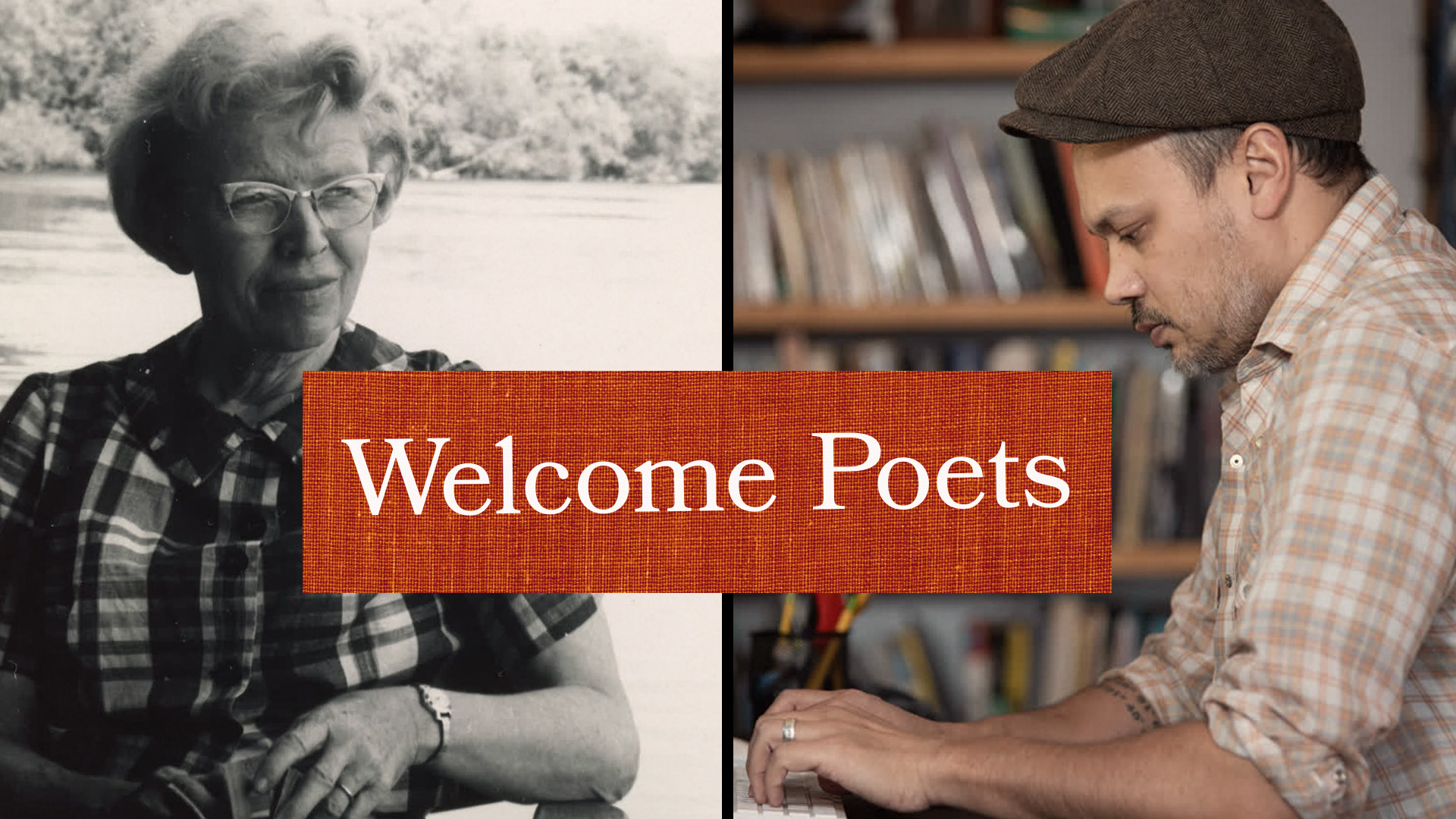




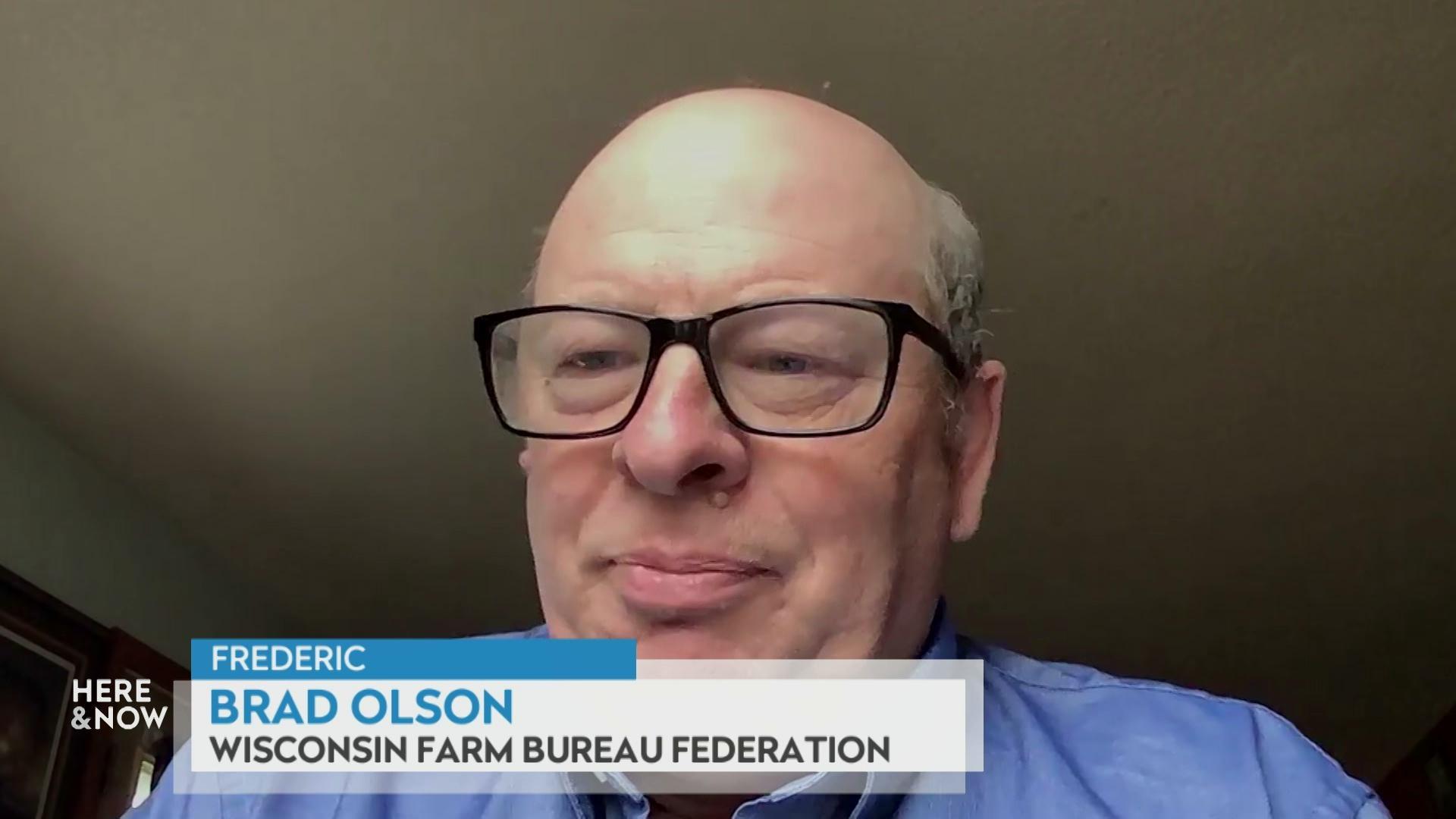




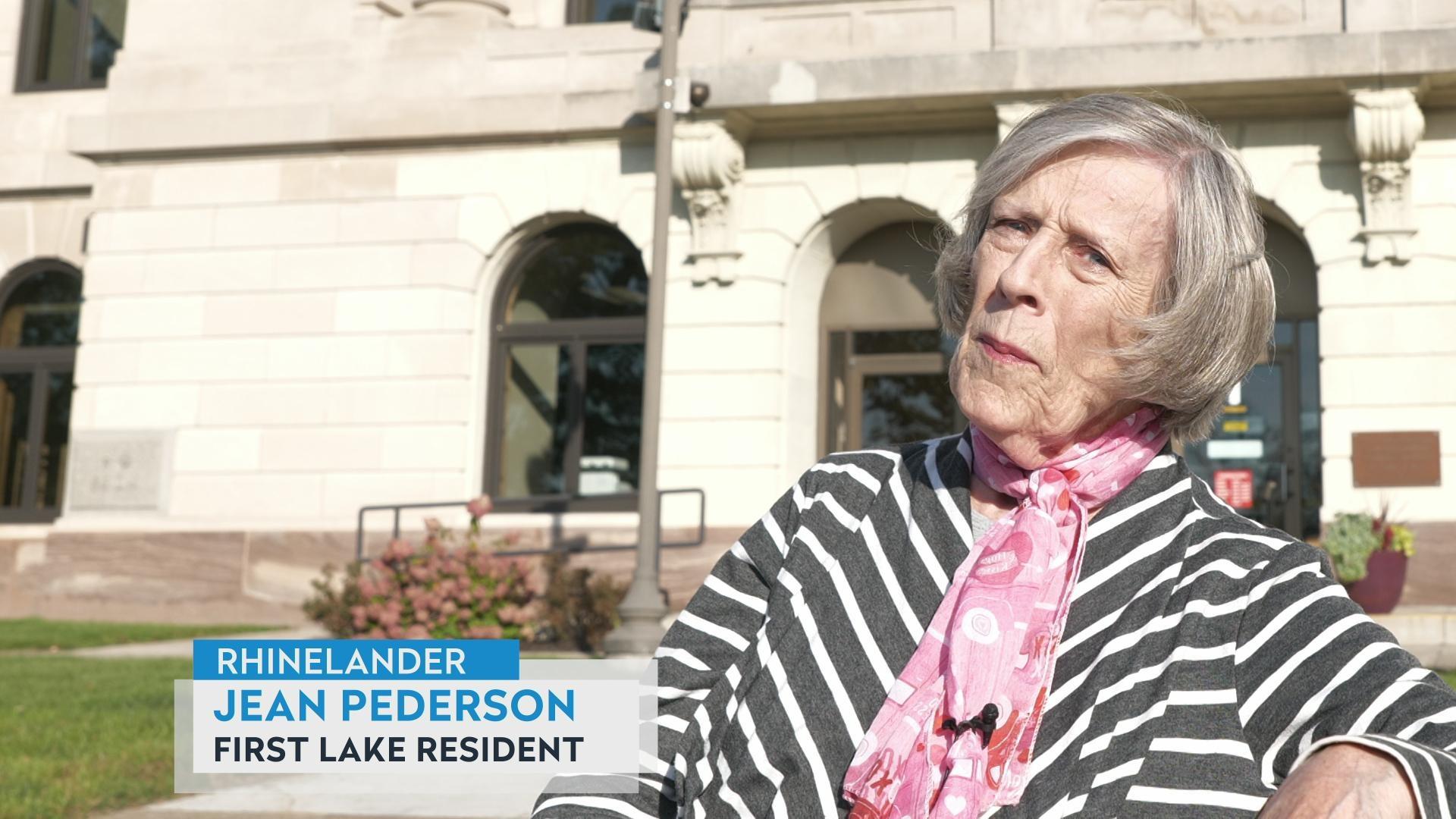


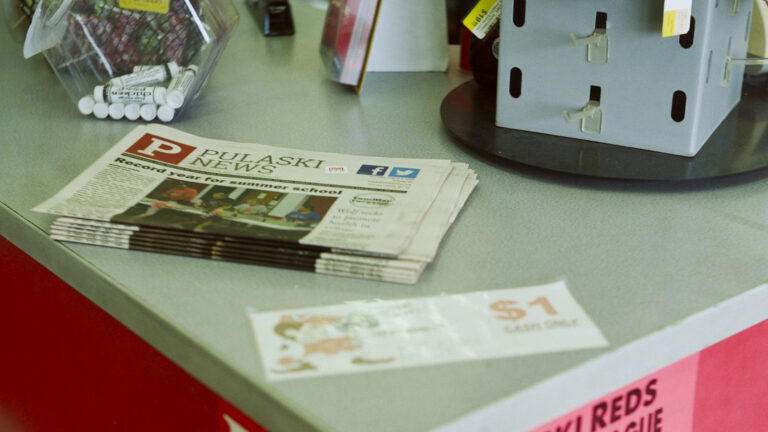
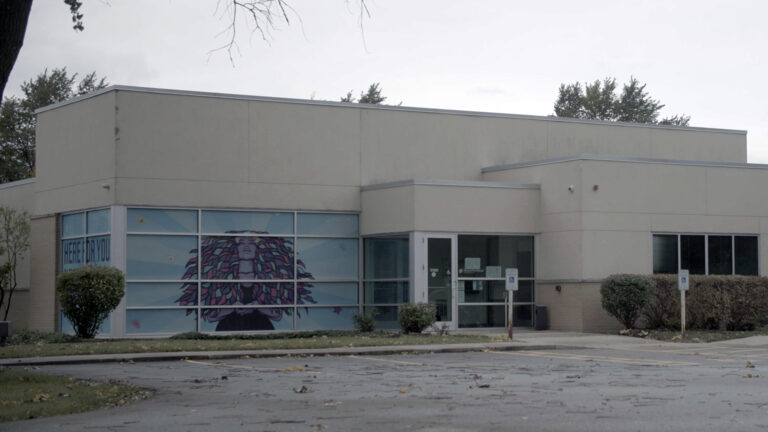

Follow Us